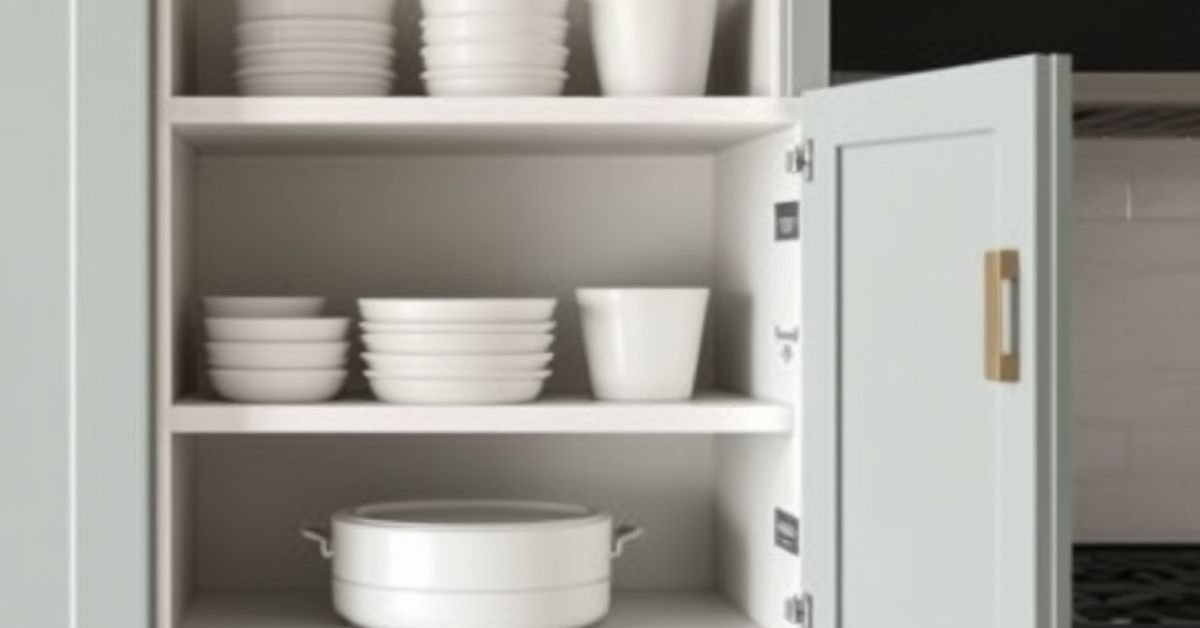
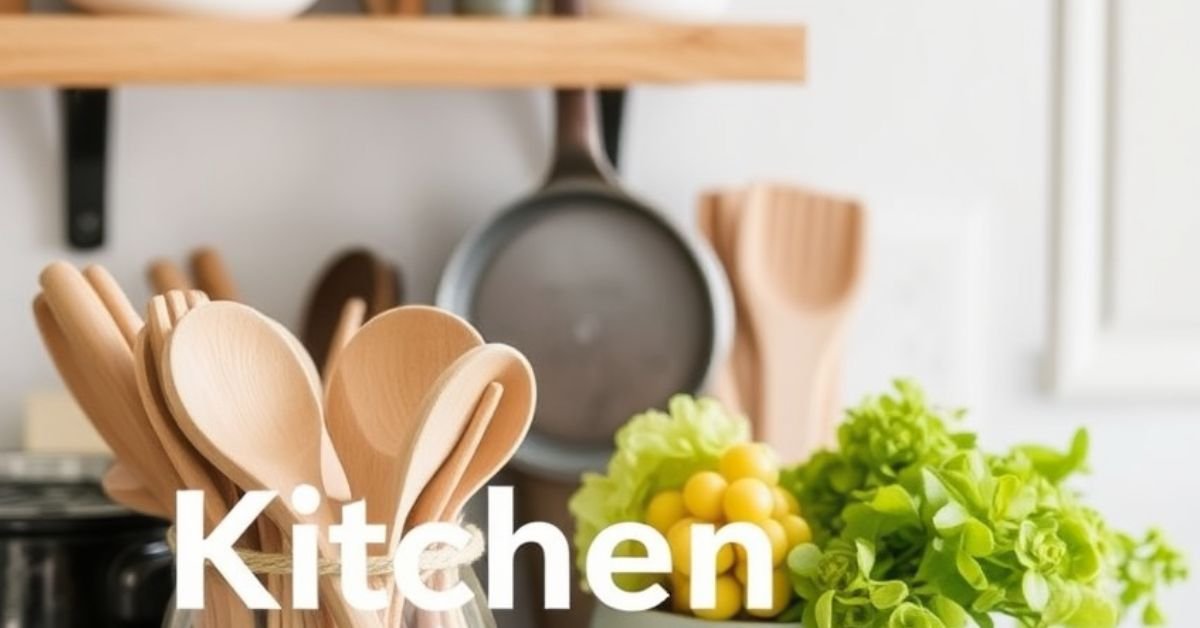
Our editorial team individually chooses every product that is suggested on neatcupkit. We might get paid if you buy something after clicking on any of these links.
Let’s face it, the kitchen can quickly become the heart of the home, but also the most chaotic. This guide will help you master how to layout kitchen storage, turning your space into an organized and efficient haven.
The Importance of an Organized Kitchen
I find that the kitchen can be one of the hardest rooms to organize, because it’s home to some of our most ingrained organizing habits. Believe it or not, the kitchen is often one of the most unorganized rooms in the house! If I asked you to find a fork, you could retrieve one immediately, but if I asked you to find your 2017 tax receipts, you might have to stop and think for a second.
Family members can be a little territorial about kitchen organizing systems, because of those ingrained habits. Kitchen organization is not just about aesthetics; it’s about creating a functional and stress-free cooking environment.
How Kitchen Layout Affects Efficiency
Even though in the 21st century, we have more kitchen appliances than ever, I’ve found that newer-built kitchens often have less usable storage space than kitchens from the 60s and 70s. Unpacking a new kitchen is one of the best ways to get organized, because the entire family is adapting to a new space. A smart kitchen design maximizes every inch of counter space and cabinet space.
The work triangle between the stove, sink, and refrigerator is a crucial concept to consider for efficient movement. Optimizing this kitchen work zone streamlines cooking and cleaning tasks. This is the first step of how to layout kitchen storage.
Overview of Storage Solutions
The newest kitchens tend to have a deep cabinet above the fridge with vertical wooden dividers (this is probably my favorite kitchen built-in feature). When thinking about how to organize your kitchen, consider the many types of kitchen storage options available. From drawers and cabinets to open shelves, there’s a solution for every need. Think about vertical storage and maximizing the wall space.
Storage containers are also useful for food storage, and drawer organizers can save space in drawers and cabinets. Using corner cabinets effectively can eliminate wasted space. Using kitchen organization tips and kitchen organization ideas can take your kitchen to the next level.
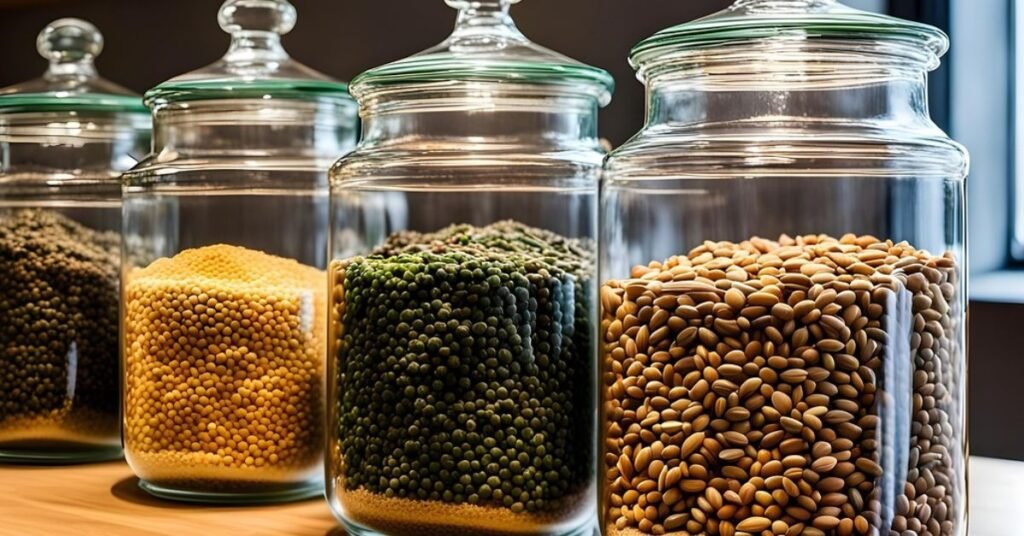
Enhancing Accessibility to Frequent Items
When I’m unpacking and setting up a new kitchen, I try to unpack boxes in order of most frequently used items, and items that are most needed. For a lot of people, that’s coffee! One of the key benefits of kitchen organization is improved accessibility. Keeping frequently used items within easy reach saves time and reduces frustration. Think about what kitchen utensils and pots and pans you use the most.
A well-organized kitchen ensures that everything has its place, making meal preparation smoother and more enjoyable. The first step is assessing which kitchen items you reach for daily and planning the layout around those.
Reducing Clutter and Improving Aesthetics
My number one piece of advice is that space is so limited in kitchens, that the more non-food items (i.e.: décor, vases, large candles) that you can store elsewhere, the better. Clutter not only takes up valuable countertop and cabinet space but also detracts from the overall aesthetic of your kitchen. Effective kitchen storage minimizes clutter, creating a more visually appealing space.
By strategically placing storage containers and utilizing kitchen organization tips, you can transform your kitchen into a clutter-free zone, optimizing space. How to layout kitchen storage often involves decluttering and reducing the number of miscellaneous kitchen items you keep.
Optimizing Space in Your Kitchen
I often see batteries, screwdrivers/multi-tools and stamps here, but it’s up to you to decide if those make more sense in your home office or with your tools and hardware. Every kitchen, whether big or small, has untapped potential for space optimization. From maximizing upper cabinets to utilizing a kitchen island for extra storage space, the possibilities are endless. With a little ingenuity, even the tiniest kitchen can become a model of efficiency.
Strategic shelf placement, drawer organizers and the right storage containers, can make a world of difference in how you manage your space. Maximize cabinet space and declutter drawers and cabinets by following a best kitchen organization method.
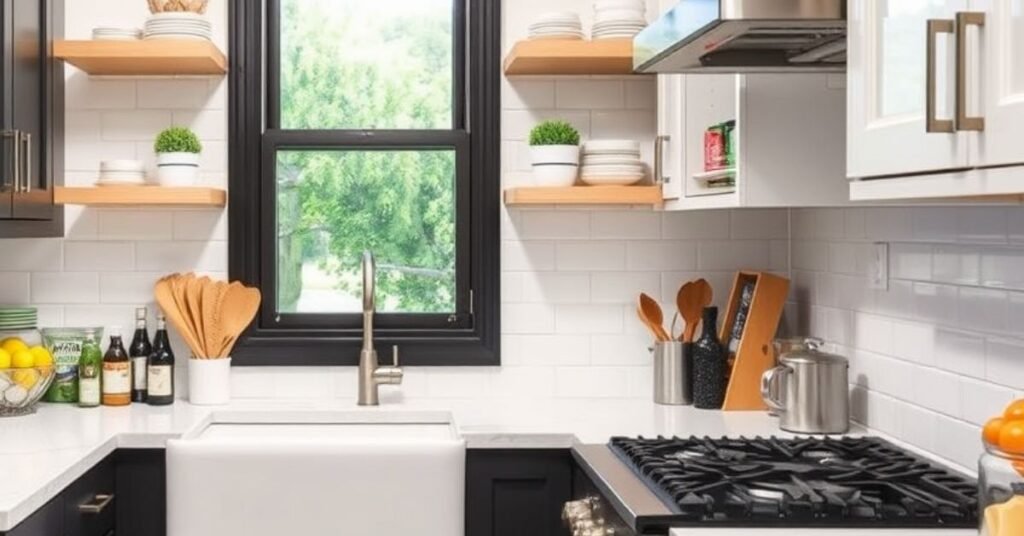
Assessing Your Kitchen Space
When considering how to layout kitchen storage, start by thoroughly assessing your available kitchen space. I find kitchens are often constrained by pre-existing layouts, reflecting the priorities of the original contractor or designer. I often must work within these limitations, maximizing cabinet and counter space. Major renovations can change things, but the built-in storage space often requires careful planning to optimize.
Focusing on efficient use of existing cabinet configurations and available drawer dimensions is key. Consider the fixed elements like the dishwasher and appliance placement when deciding how to organize your kitchen. Taking this into consideration, you can begin the process of organizing your kitchen, effectively utilizing what you have.
Identifying Key Zones in the Kitchen
The next step in laying out kitchen storage is to identify key kitchen zones to streamline organization. Separating the kitchen into distinct zones can drastically improve efficiency. I organize my kitchen into several work-friendly zones, including:
A cooking zone
A baking zone
A drink station zone
A lunch prep zone
A cleaning zone
I find that this zoning system allows for targeted kitchen storage solutions. I consider where I prep meals, cook, bake, and clean when determining the optimal placement of kitchen utensils, appliances, and food storage. This approach streamlines workflow and minimizes unnecessary movement between kitchen zones.
Choosing Storage Solutions for Each Zone
After identifying kitchen zones, the next step is selecting specific kitchen storage solutions tailored to each area’s needs. I like to keep all the utensil related to the baking zone from measuring spoons to spatulas in this drawer. I find that a well-organized pantry is essential for the cooking zone, storing spices, food storage, and pots and pans, strategically organizing kitchen items.
Consider using drawer organizers to keep kitchen utensils neatly arranged. This prevents clutter and ensures that everything is easily accessible. I like to use storage containers to maximize storage space within cabinets. Implementing these kitchen organization ideas is crucial to efficiently organize a kitchen.
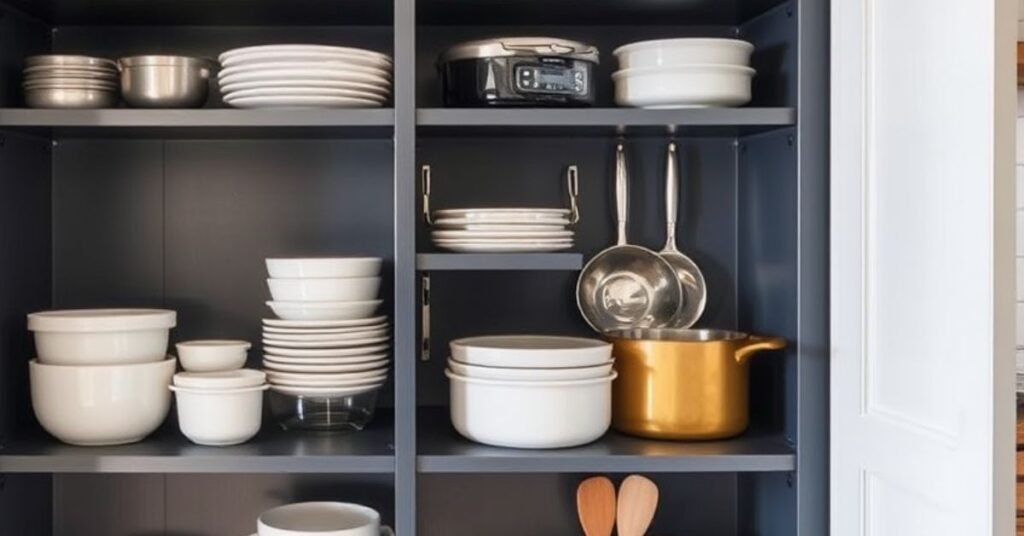
Understanding Galley Kitchen Layouts
The galley kitchen layout, characterized by two parallel runs of cabinets and countertop, demands efficient kitchen storage. Maximizing storage space in a narrow galley kitchen often involves utilizing upper cabinets and vertical storage solutions. I advise you to make sure to consider the placement of appliances such as the dishwasher, as well as food storage.
Employing open shelves can create a sense of spaciousness while providing easy access to frequently used items. I like to use drawer organizers and storage containers to keep things tidy. Optimizing every inch is key to making this compact design work efficiently as part of your kitchen organization.
Exploring U-shaped Kitchen Designs
The U-shaped kitchen offers ample counter space and cabinet space, making it ideal for multiple cooks and extensive kitchen storage. I often use corner units and lazy Susans to maximize the functionality of corner cabinets. I find that incorporating a pantry or tall cabinet helps to keep food storage organized and accessible.
This layout allows for distinct kitchen zones. Consider placing the sink and dishwasher along one leg of the “U” and the stove and appliances on another. This helps create a smooth workflow. With careful planning, a U-shaped kitchen design can be both practical and visually appealing.
Benefits of L-shaped Kitchen Storage
The L-shaped kitchen design provides a flexible and open layout, which makes it adaptable to various kitchen sizes and styles. I maximize storage space by strategically positioning kitchen cabinets and drawers and cabinets along the two walls. I find this setup creates a spacious work area. I also like to integrate a kitchen island for extra prep countertop and storage space.
Using upper cabinets and open shelves helps to keep frequently used items within reach. I also try to think about the placement of small appliances to free up counter space. The L-shaped kitchen allows for efficient kitchen work zones and provides ample room for entertaining, by following kitchen organization ideas.
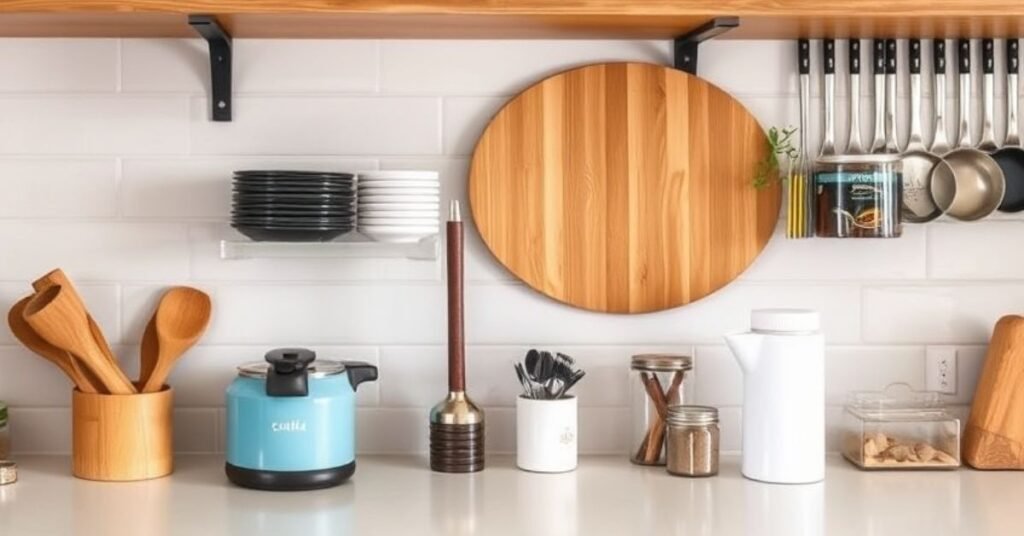
Efficient Pantry Arrangement Ideas
The pantry is essential for keeping food storage and spices neatly arranged. A well-organized pantry utilizes open shelves or adjustable kitchen cabinets to store kitchen items. I often use clear storage containers to store dry goods, which makes it easy to see what’s inside. You can save cabinet space by using vertical storage space.
I also find that labeling jars and storage containers helps to quickly locate frequently used items. With effective pantry planning, you’ll always have everything you need. You can maximize cabinet space with a good kitchen organization.
Maximizing Cabinet Space with Organizers
I often see kitchen cabinets with adjustable laminate shelves held in place with pegs, but there’s often not enough shelves. I will take one of the existing shelves to a home improvement store and have them cut an identical one. I can find matching pegs to make shelves to match. I like to store plastic Tupperware with its lids on to maximize storage space. Consider organization ideas for the kitchen.
Storage containers can save a lot of space. I find that using kitchen organizers can make a huge difference in maximizing cabinet space. Using upper cabinets well is a part of kitchen organization. This also saves counter space.
Drawer Organizers for Easy Access and Efficiency
I usually store everyday kitchen utensils in the top drawer closest to the sink or the dishwasher. This is to make putting things away faster. Using a drawer organizer is an essential tool for keeping drawers and cabinets neat and maximizing storage space. I find that dividers help to separate utensils, bowls and other kitchen items. This makes finding frequently used items easier.
Consider where the junk drawer will be. This is important, as kitchen organization ideas will not work if the junk drawer is not organized. Drawer organizers can also be used for your spice collection, pots and pans or even small appliances to keep them protected.
Recap of Key Organizing Tips
In conclusion, I find the key to a well-organized kitchen lies in thoughtful planning and strategic use of storage solutions. The foundation of a good kitchen starts with assessing your kitchen space, identifying kitchen zones, and picking the right kitchen organizers.
Consider the placement of appliances, food storage, and kitchen utensils to optimize countertop. Remember that kitchen organization is the first step of a new kitchen.
Encouragement for Implementation
Implementing these kitchen organizing tips will help you to create a functional and aesthetically pleasing kitchen. Don’t be afraid to experiment with different kitchen storage solutions to find what works best for your needs. I can assure you that the rewards of a well-organized kitchen are well worth the effort. These kitchen organization ideas can make all the difference.
When I think of kitchen organization, I believe that a decluttered kitchen enhances your cooking experience. So, take the plunge, apply these tips, and see the amazing transformation in your kitchen. How to layout kitchen storage is essential for a functional home.
The best layout for kitchen storage depends on individual needs and kitchen size. There is no single answer to the question of how to organize your kitchen. However, I find that U-shaped and L-shaped layouts generally offer the most cabinet space and counter space. Consider your kitchen work zones and how you use each kitchen area to optimize storage space.
Maximize storage space in a small kitchen by utilizing vertical storage with upper cabinets that reach the ceiling. I like to use open shelves to create a sense of openness. I find that drawer organizers helps to keep drawers and cabinets tidy. Use small appliances that can be stored in cabinets when not in use to conserve countertop. Implementing these organization ideas will help to organize your kitchen.
Corner cabinets can be challenging, but lazy Susans and pull-out shelves are great for maximizing storage space. I find that these solutions make it easier to access frequently used items, like pots and pans, without having to reach far back into the cabinet. Avoid storing anything small in these deep cabinets to maximize storage space. Smart solutions will help you organize your kitchen.
For easy access, I arrange kitchen drawers and cabinets by function. I put utensils and spices in the top drawer organizer, and pots and pans in deeper drawers below. Keep frequently used items near the kitchen work zones where they are needed. Having a smoothie station basket to this drink zone can be a game changer when you organize your kitchen into work-friendly kitchen zones.
I find that a balance of both vertical storage and horizontal storage space is ideal for most kitchens. Vertical storage maximizes wall space and upper cabinets for items you don’t use often. Horizontal storage, with drawer organizers, makes frequently used items easily accessible. Pots and pans should be put in a location that makes sense: near the stove. This can help you to organize your kitchen.